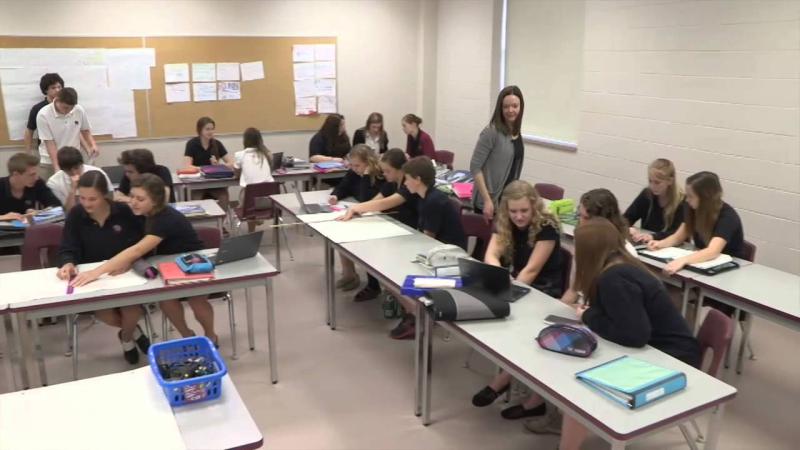Blended Learning and Hybrid Learning are instructional strategies that integrate in-person classroom experiences with online learning components. Despite their frequent interchangeability, these terms have important distinctions. Blended learning is a teaching method that incorporates online and face-to-face learning experiences, with online content supplementing and enhancing traditional classroom instruction. This strategy promotes self-paced and individualised learning by allowing students to access and interact with course materials outside class time. Teachers can use online platforms to assign assignments, share resources, and provide feedback, freeing classroom time for discussions, group projects, and problem-solving exercises.
In contrast, Hybrid Learning is a subset of blended learning that places equal emphasis on online and in-person learning experiences. This model separates course content and activities into online and face-to-face components, each of which is integral to the overall learning experience. Frequently, hybrid learning consists of alternating online and face-to-face sessions, with students working autonomously during the online portion and engaging in collaborative activities during the face-to-face sessions. While blended and hybrid learning combines online and in-person learning experiences, the critical difference resides in the proportion and integration of these elements. Blended learning combines online resources with traditional classroom instruction, whereas hybrid learning emphasises online and in-person experiences equally.
What is Blended Learning?
Blended learning is a way of learning that combines traditional face-to-face classroom teaching with online learning to make a more complete and integrated learning experience. This method uses the best parts of online and face-to-face learning to get students more involved, help them learn in their way, and improve their education. In blended learning, online tools and activities are purposefully added to the curriculum to support and supplement what is taught in the classroom. Learning management systems (LMS) and other digital platforms are often used to let students access course materials, turn in tasks, and work with other students outside of class time. This method enables learners to work at their own pace, return to the material when needed, and get feedback immediately.
In the face-to-face part of blended learning, interactive discussions, group work, and hands-on tasks are used to help students learn more and apply what they’ve learned. Teachers can make better use of class time by clearing up misconceptions, assisting students to think critically, and pushing them to work together. This online and in-person learning mix makes the learning setting more exciting and active. Blended learning also helps students learn essential skills for the 21st century, like how to use technology, control themselves, and solve problems. Using technology to help students learn, they are better prepared for a world that is becoming more digital and linked. Overall, blended learning is a flexible and successful way to teach that meets the needs and preferences of different learners.
What is Hybrid Learning?
Hybrid Learning is a way of teaching that uses both online and in-person learning. It stresses that both types of learning are equally important to the learning process as a whole. As a type of blended learning, hybrid learning tries to use the best parts of both online and in-person teaching to make learning more exciting and effective. In hybrid learning, the course material and tasks are split between online and in-person parts. The online part usually involves self-paced learning, where students access course materials, finish assignments, and participate in asynchronous discussions through digital platforms or learning management systems (LMS). This lets students work independently, review material when needed, and learn crucial digital literacy skills.
The face-to-face part of hybrid learning is about working together, fixing problems, and having in-depth conversations that build on what was learned online. In the classroom, time is used to help students learn more, clear up misunderstandings, and develop their ability to think critically. Most of the time, hybrid learning involves switching between online and in-person classes. This way, students can get the best of both ways of learning. Hybrid learning is a flexible and adaptable way to learn that meets the needs and interests of different students. Hybrid learning tries to create the best learning setting for student success by focusing on the unique value of both online and face-to-face learning.
Difference Between Blended Learning and Hybrid Learning
Blended learning is the combination of online and face-to-face education, with digital resources supplementing and augmenting conventional classroom teaching. This strategy encourages learning at one’s speed and tailoring one’s experience through technology to supplement in-person interactions. Hybrid Learning is a type of blended learning that places equal weight on online and face-to-face instruction. Online and in-person components of a course are essential to the student’s development as a learner. This format typically combines virtual and in-person meetings. Fundamentally, hybrid learning emphasises online and in-person experiences, while blended learning prioritises online resources to supplement in-class training. We’ve highlighted the primary difference between the two below.
Integration vs Separation
Hybrid learning splits course content and activities between online and face-to-face components, whereas blended learning combines online and traditional classroom education.
Balance
While hybrid learning places equal significance on online and in-person experiences, blended learning emphasises supplementing in-person instruction with online resources.
Online Support
While in hybrid learning, the online component is seen as integral to the overall curriculum, in blended learning, it is used to supplement and expand on in-class activities.
Classroom Time
Hybrid learning frequently rotates between online and face-to-face sessions, whereas blended learning uses technology to maximise classroom time for collaborative discussions and projects.
Flexibility
Because of the adaptability of hybrid learning, educational institutions may better meet their students’ varying needs and preferences in terms of course structure and delivery.
Student Autonomy
The online component of hybrid courses allows students more freedom to direct their learning and development.
Course Design
Unlike hybrid learning, which primarily focuses on incorporating technology into preexisting courses, blended learning mainly focuses on integrating technology into existing courses to divide content between online and in-person sessions.
Learning Outcomes
Hybrid learning seeks to strike a balance between online and face-to-face training, whereas blended learning focuses on maximising both benefits for the learner as a whole.






